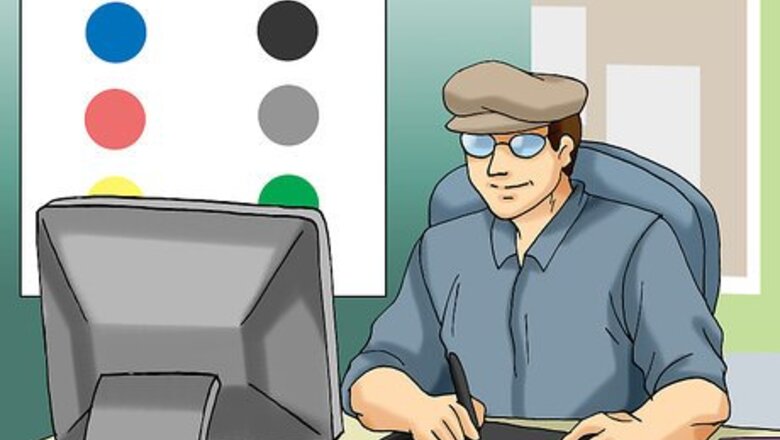
views
Adding Classic Costume Elements

Figure out the colour scheme of the costume. Usually, the whole costume should include 3 or fewer colours/shades only. This helps ensure that the costume does not distract from your superhero. It will also make it easier for you to replicate the look in a comic. Think of your superhero’s powers, motivations, and backstory. Lighter colours tend to indicate heroism, while darker colours indicate a conflicted nature; rich colours point toward sophistication, while bright colours tend to reveal youthful energy. Classic superheroes tend to dress in some combination of red, blue, and yellow, which can denote energy and determination. A mix of black, grey, and green, though, could denote mysterious and naturalistic qualities.
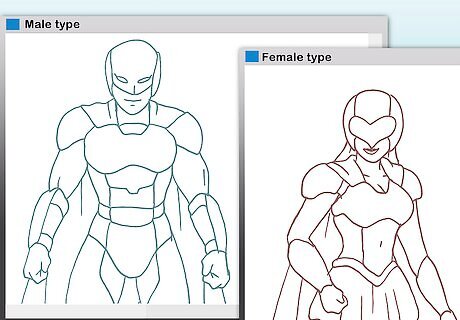
Nail down the basic costume before accessorizing it. Design the actual outfit first, before figuring out the logo, or whether it will include a mask, cape, etc. Once you have designed your base costume, it gives you a blank slate to work with. Feel free to take cues from iconic superhero costumes, but be sure to refine them into your own creation. Skin-tight, full-coverage bodysuits tend to be the standard base layer for male superheroes, while female heroes often show a bit more skin. You don’t have to follow in this tradition, but body-hugging base layers do provide a clean palette for accessorizing.
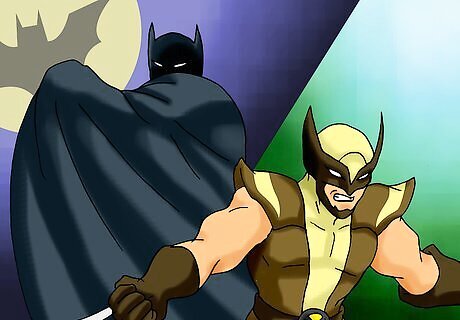
Consider if a cape is right for your hero. While capes are often considered synonymous with superheroes, plenty of famous ones — like Iron Man and Wolverine, for instance — go without them. Capes can help accentuate motion or indicate flight (think Superman), or add a layer of mystery (as with Batman). However, they can also be an unnecessary complication for a well-designed costume. If you can’t think of a good reason why your hero should have a cape — either for practical (e.g., concealment, protection) or expressive (e.g., flair, royalty) purposes — it may be best to exclude it.
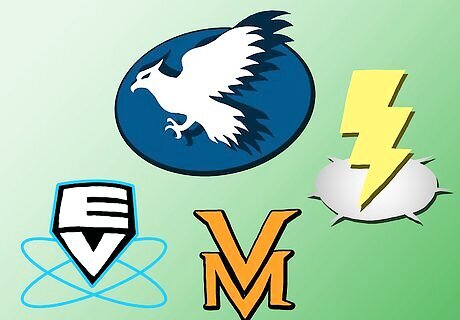
Create a memorable logo or other distinctive element. Superman, Batman, and Spider-Man are arguably the 3 most famous superheroes, and each has a simple chest emblem — the ‘S’ shield, bat, and spider — that immediately identifies them. Don’t obsess over the small details of a totally-awesome costume before you’ve nailed down the iconic logo, symbol, colour, etc. Make sure it’s easy to recognize and repeat, and that it can adapt to variations on your design. Brainstorm logo ideas based on the hero's name, origins, or powers: in the last case, for instance, consider the lightning bolt used for the Flash. Fans and other designers can use an iconic emblem as a jumping-off point to create their own distinctive interpretations of the design. Consider this: Do you have an iconic element that would be immediately recognizable on a t-shirt, or even as a tattoo?
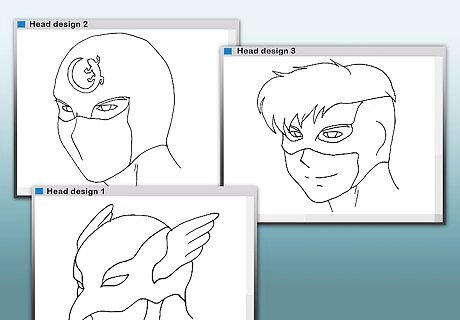
Decide on a mask. What kind of mask will your hero wear? Will it cover the whole face, or only the eyes? The colour should go along with the characteristics of the hero. For example, Batman has a black mask because his name has the word bat in it, which is related to the dark. Alternatively, will your hero even have a mask at all? As with capes, if there is no real reason for your hero to have one (i.e., unless there's no other way for them to hide their identity), you may be better off skipping the mask. A mask that covers the entire face can make it more difficult to show emotions, and emotions help to humanize your superhuman creation.

Think about footwear and gloves. Some superheroes (like Superman) work with ungloved hands, but very few go around in their bare feet! Heavy duty gloves can give your hero a more industrial, rough-and-tumble vibe, as opposed to sleek and form-fitting gloves. Likewise, big, heavy-duty boots indicate a different personality than slimmer, heeled boots, especially on a female superhero.
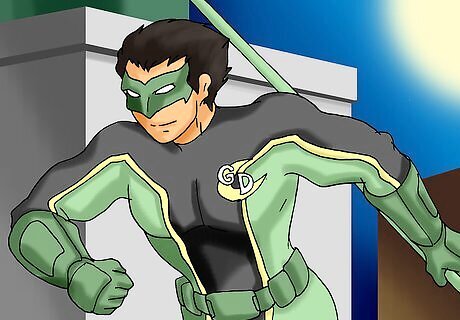
Contemplate adding a utility belt and gadgets. Many superheroes carry a utility belt with them. If you think your character needs one, you’ll have to decide how it looks and what it contains. Consider giving your superhero a signature weapon that they carry with them in their utility belt. Batman, for example, probably has the most iconic gadget-filled utility belt. A utility belt can make a superhero feel more practical, realistic, and human. However, a superhero can have gadgets unconnected to a utility belt, or iconic weapons that they carry. Consider, for instance, Thor’s hammer or Aquaman’s trident.
Designing a Memorable Costume
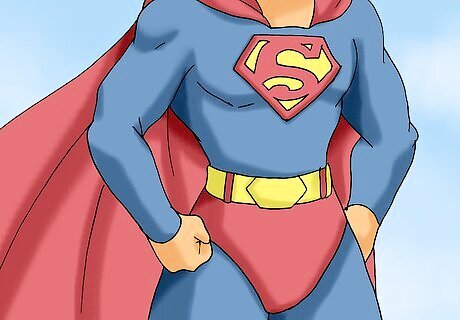
Aim for striking simplicity. The best superhero costumes don’t try to tell you everything there is to know about a character, but they also don’t keep everything a mystery. Decide on a handful of critical design elements that speak to the character’s essence, then fill out the rest of the costume with simple elements that won’t be distractions. For instance, Superman’s classic costume is quite simple — blue bodysuit, red boots, cape, and “underwear,” and the indelible ‘S’ logo on the chest. Yet these simple elements evoke his powers (flight, strength), principles (justice, patriotism), and characteristics (such as the determination and compassion his unmasked face can reveal).
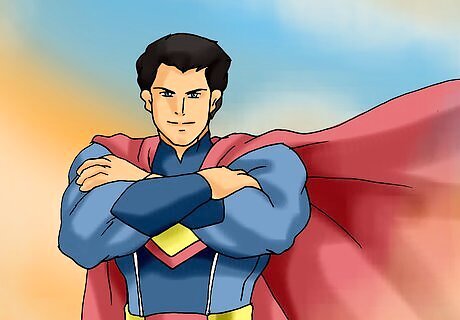
Balance functionality and fantasy. Skintight pants, flowing capes, and cumbersome masks aren’t the most practical gear, not to mention the heeled boots and revealing tops that female superheroes often sport. But these heroes are “super” for a reason, so they also don’t need to look like they’re on the SWAT team. The trick is to balance some degree of practicality with the supernatural nature of the hero. For instance, classic comic depictions of Iron Man depict an armored suit that somehow manages not to conceal the human form beneath it. Often, the more "human" and less "super" the superhuman hero is, the more practical their costume should be. Compare the very human Batman to the nearly all-powerful Superman, for example.
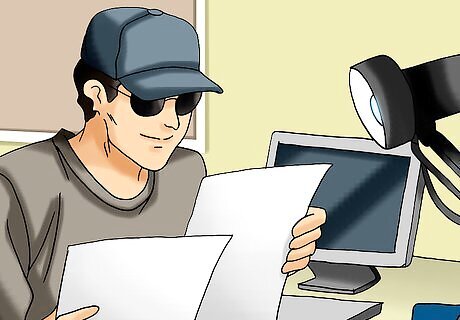
Use a form-fitting costume to reveal the hero's humanity. Even if your hero comes from another planet (like Superman), you want to make them relatable by showing their human elements as well. Superhero costumes aren’t typically skin-tight just to show off biceps or breasts; they also emphasize the (near-perfect) human bodies of these superhuman figures. Design a costume that reveals, rather than conceals, muscles and movement. Think of it this way: for movie versions of Batman, body armor makes sense as practical protection for the human we see on screen. In comics, though, a form-fitting outfit reminds readers that there’s a real human being beneath the cape and cowl.
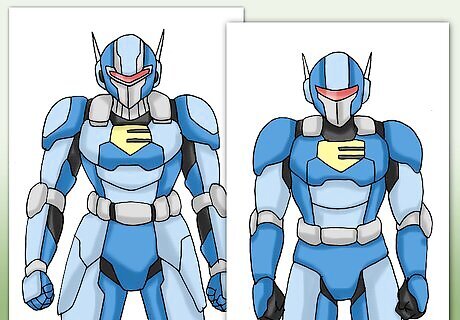
Start with a bold vision, then adjust it as needed. Generally speaking, it’s easier to tone down a costume design that’s too outrageous than to fix one that’s too dull. With your first drafts, go for the boldest colours, the ornate mask, and the big tools or weapons. As you revise your design, decide which elements are essential to your vision of the character, and which can be toned down or removed to streamline the costume’s look.
Design more than one costume. Once you nail down your hero's essential look, consider also creating variations on your primary costume design. Make each variation suitable for different circumstances (Batman, for instance, often wears different gear based on the situation but still is easily recognizable). This will also give fans, cosplayers, and marketers more leeway in transforming your core costume design to suit various uses.













Comments
0 comment